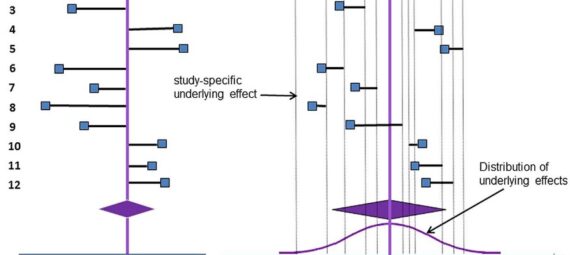Need: Whenever you want to combine & analyze several trials and also you want to estimate the summary treatment effect based on various trails or you want to obtain a finding that is beyond (single) effects found in different studies, we need to apply this concept
How it will work:
The word meta-analysis is a synonym for research synthesis. It combines the results of studies in order to come to a general conclusion. The more homogenous the studies are, the more explicit the conclusion is. A meta-analysis looks both at internal validity — is there an effect? — and external validity — to which part can this effect be generalized?
Hence, the goal of a meta-analysis is not simply to report the average treatment effect — it is to make sense of the patterns of effects. If the effect size is consistent across studies, we need to know that and to consider the implications. If it varies, we also need to know that and consider the implications
meta-analysis is theoretically a Mixed Model:
- fixed effects → treatments
- random effects → studies (between variance)
- repeated effects → studies (within variance)
Hence, a meta-analysis looks at treatment effects over and across the variation between studies and can be described using a two-level mixed model including both within and between study variation. At the first level, the effect size estimate is just the effect size parameter plus random variation. If we combine all the effect size estimates, we get the mean effect size estimate. At the second level, the effect size parameter is determined by a mean effect size plus a study-specific random effect. The random effect represents between-study variation. The variation of the random effect describes the amount of variation across studies
- combine different studies to demonstrate a treatment effect by increasing your sample size and statistical power.
- reduce the uncertainty often seen in small individual studies with a high type II error (false-negative results).
- obtain more confident conclusions in a wide range of experimental conditions (external validity).
Questions need to asked before analysis
- will the treatment effect be less strong?
- will the treatment effect go to another direction?
- what is the possibility of limiting / deleting their influence in the design phase
- if I cannot limit their influence in the design phase, what is the possibility of limiting / deleting their influence in the analysis?
- if I cannot limit their influence and the influence is big, can I still include the study in the meta-analysis
source
https://towardsdatascience.com/introduction-to-meta-analysis-in-r-468e9b33925c



